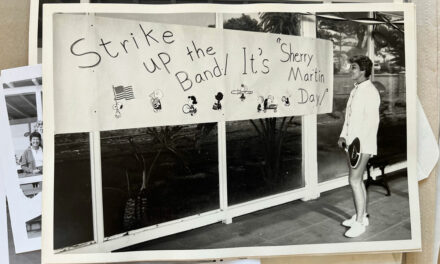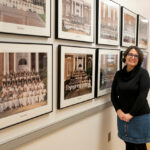
From Toy Boats to Building Ships for Chevron
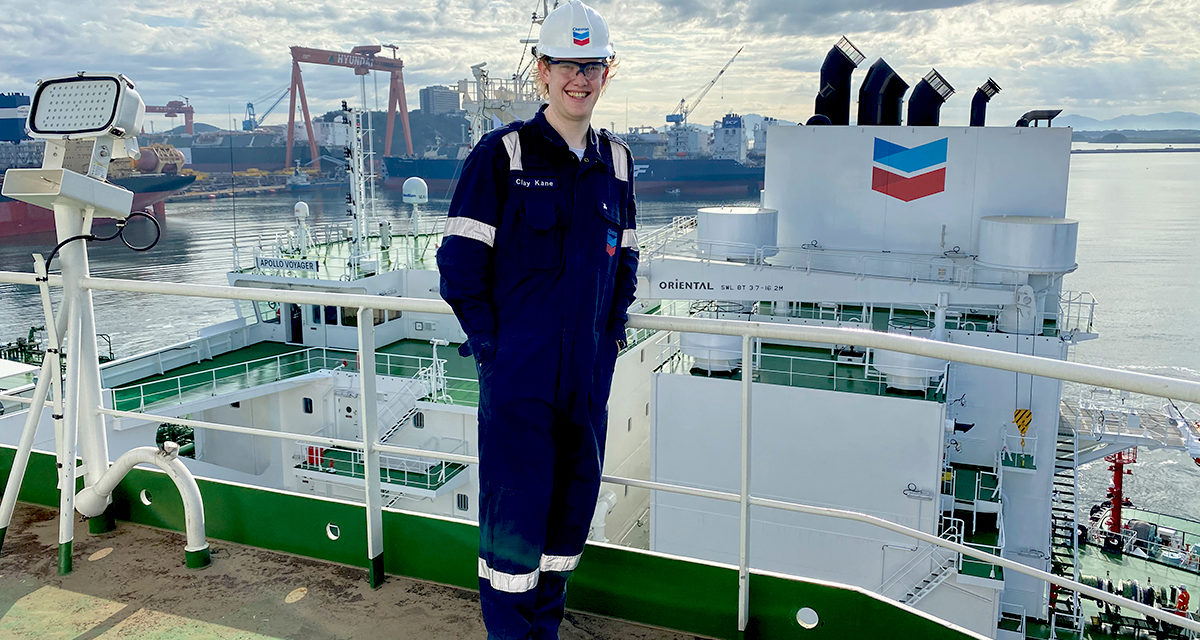
From Toy Boats to Building Ships for Chevron
Clay Kane ’13: Naval Architect and Marine Engineer
BY MELISSA ULSAKER MAAS ’76
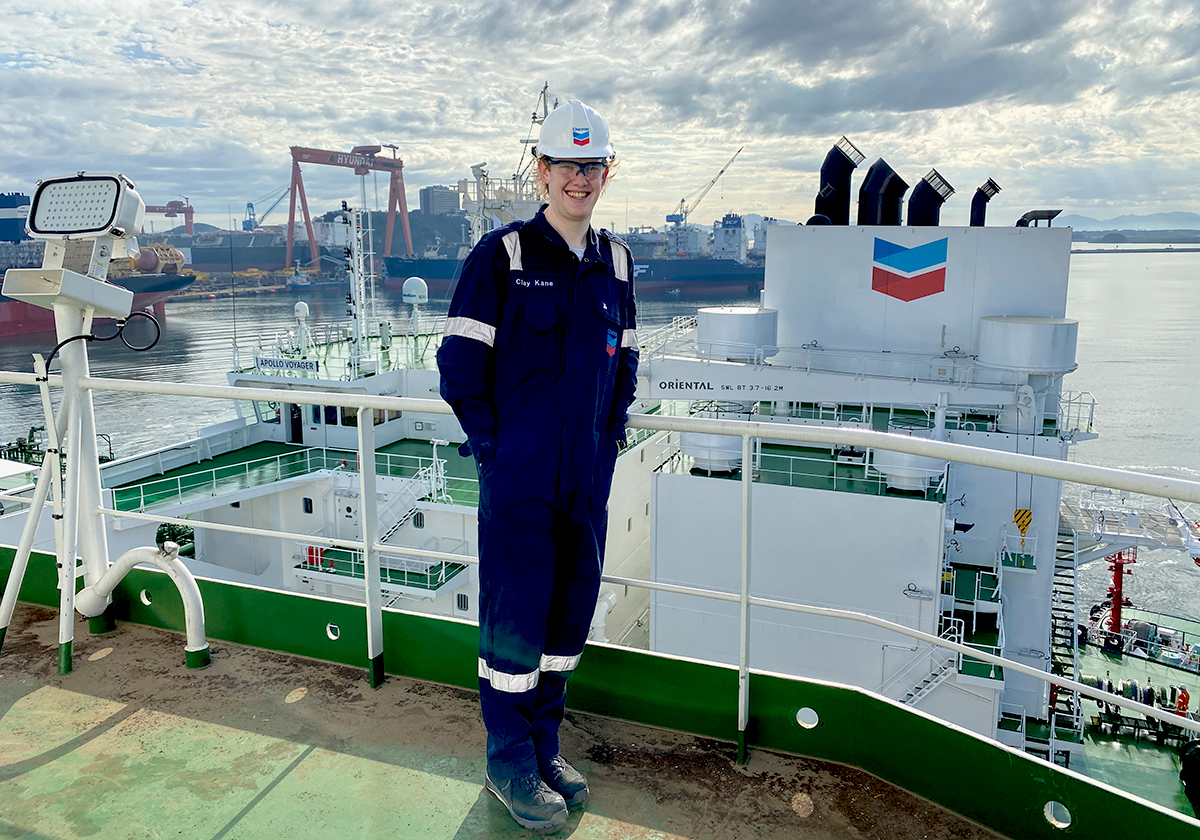
“I liked going on adventures in the different port cities, but what I really wanted to do was explore the ship,” Clay says about cruises he enjoyed with his mom, Amy Curtis ‘80, and grandmother, Odie Curtis. “I was always trying to talk to the officers or the engineers but they are very strict for safety reasons.” There is a large and intricate model of a sailing ship in Amy’s living room that they bought in Stockholm at the Vasa Museum. The Vasa was one of the most powerful warships built in the Baltic in the 1700’s. For its maiden voyage, the crew was allowed to invite family and friends aboard. “It was the pride of the Swedish Navy,” Clay explains. “But as it sailed out into the harbor, it immediately sank. They had too many people on board and it just rolled over.” Remarkably, the soil it settled in had no salt so when they found and excavated it in 1961, it was extremely well preserved.
Clay and Amy both attended SSSAS from Lower School through graduation, and Clay’s connection to the school runs deep. Growing up, he witnessed Amy’s tireless dedication to the school, serving on four different boards and co-chairing two head of school search committees. “It just felt like home and the right place to be,“ Clay says. His love of math and science started early. “Middle School math class with Mrs. Nuckolls was wonderful,” he recalls. “I don’t know how she had the patience to deal with that many middle school boys in the same class.” Later, he particularly enjoyed AP Physics and AP Calculus BC—giving him an excellent foundation for engineering.
Outside of math and science, Clay has fond memories of Emily Geiger’s AP Economics class. “Her AP Econ class was the best class I’ve ever taken,” Clay says. “We had so much fun, and I think every single person in the class got a five on the exam.” Although English wasn’t a favorite subject, Clay is grateful to many of his English teachers. “We had a great group in Mrs. Zebrak’s freshman class, and in junior year Mr. Wenger was so knowledgeable and so into film,” Clay says. “In Middle School I had Mrs. Wolf as an advisor and for English. We had quite a connection and she was wonderful. I credit her with my biggest improvements in writing and speaking.”
5 Things to Know about Naval Architecture and Marine Engineering
1) More than 70% of our planet’s surface is covered with water, and our lives are influenced by this fact every day. We rely on our water-based industries to support our society.
2) Naval architects and marine engineers design, build, and maintain ships.
3) This field of engineering incorporates elements of mechanical, electrical, electronic, software, and safety engineering as applied to the engineering design process, shipbuilding, maintenance, and operation of marine vessels and structures.
4) Naval architecture involves basic and applied research, design, development, design evaluation and calculations during all stages of the life of a marine vehicle.
5) They work on cargo ships and tankers, cruise ships, aircraft carriers, nuclear submarines, high speed sailing and power boats, mega yachts, tugboats, icebreakers, floating wind turbines, underwater robots, and more.
Clay loved the performing arts environment, picking up clarinet in Middle School. “Band was my escape from the academic rigors,” he says. “It just came second nature to me and I appreciated that the music teachers accepted our various skill levels as they were. Playing in the pit orchestra for the Upper School musicals was super fun.”
When it came time for Clay to look at colleges, he was considering mechanical engineering when he stumbled across naval architecture and headed to the University of Michigan. Five years later he left with a bachelor’s and a master’s of science in naval architecture and marine engineering.
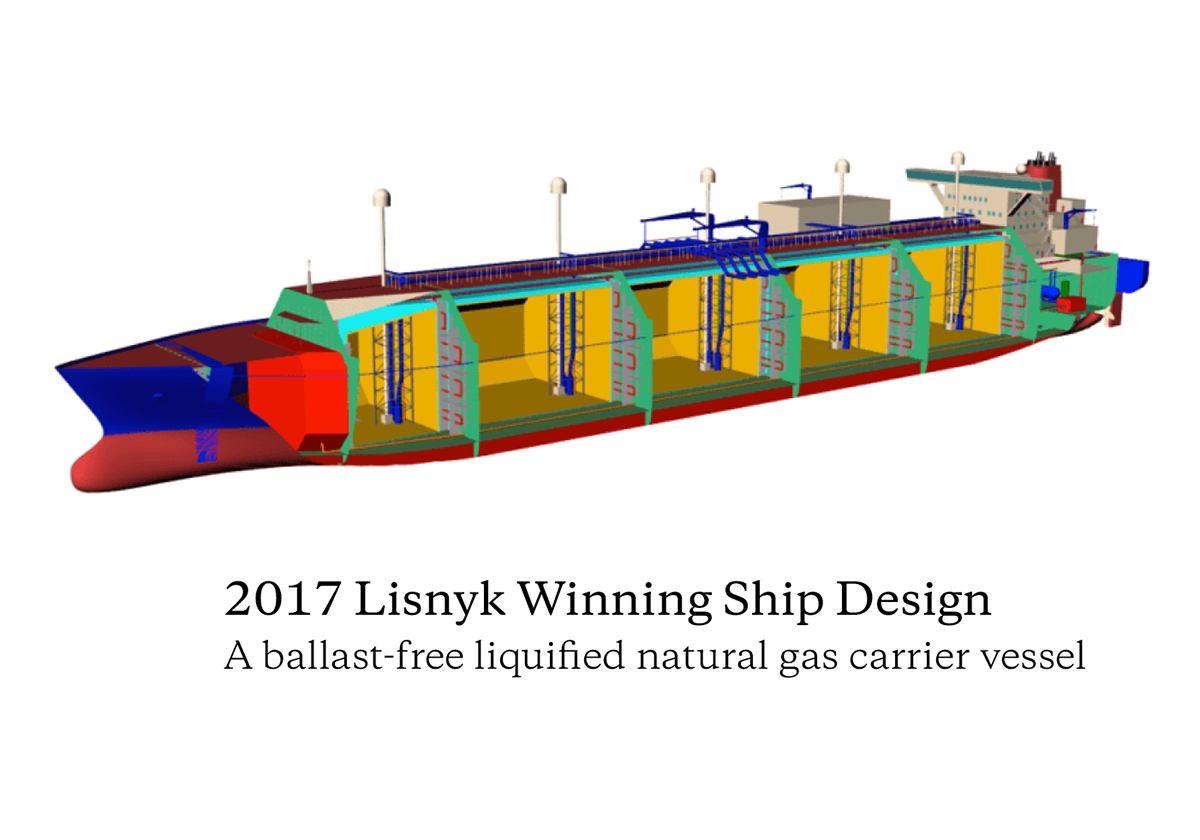
In his senior year, Clay was part of a five-student team that won the international Dr. James A. Lisnyk Student Ship Design Competition. The challenge is to design a theoretical but practical cutting-edge vessel. Clay and his team designed a ballast-free liquified natural gas (LNG) carrier vessel. The concept represents a paradigm shift in vessel design. The team implemented a cutting-edge structural design theory known as Advanced Double Hull, which allows water to flow unimpeded through the bottom of the ship, as opposed to holding stagnant water in large tanks. Since ballast water discharge can contain a variety of biological materials that are often non-native—from toxic algae to cholera—they can cause major damage to aquatic ecosystems, like the Great Lakes. “The design we worked on not only turned out to be a more sustainable solution, but was also estimated to be 7-10% more efficient,” Clay says.
Clay spent his summers as a naval architecture intern, including working for Chevron providing engineering support for their fleet, which is composed of oil tankers and LNG carriers. When he finished his studies in Michigan in 2018, Chevron offered him permanent employment in San Ramon, California. One of Clay’s first large projects was working on an oil tanker from inception to launch. Two years into the project, he was getting ready to go to a shipyard in South Korea, a leading country in ship manufacturing, when the pandemic hit and his departure was delayed three months, from March to June in 2020.
“South Korea had a good handle on the COVID situation that summer, with only about 20 reported cases a day, so it was nice to be out there at the time,” Clay says. “When we first got there we had to do a two-week isolation in our rooms, but after that we got to experience normal life—or, at least, as close to normal life as was possible. The only downside was not being able to travel around South Korea or Asia, which I was looking forward to doing.”
Clay enjoyed living in South Korea, particularly in Mokpo, in the far southwest corner. “It’s a smaller city (traditionally a fishing/seafaring hub), and the expat community isn’t large,” Clay says. “You could say it’s a very authentically Korean experience to live there—not a lot of Western food or Western style stores.” Clay enjoyed the more immersive nature of living there and now misses Korean food, which was fresh and delicious. While he couldn’t travel on the level he had hoped, he did get to see a good bit of Korea between the first project in Mokpo, the second project in Okpo on Geoje Island, and some trips to Seoul and the DMZ. While he only learned a bit of Korean, he never found the language barrier to be much of an issue. “I found Korea to be a very welcoming country, and the people were very proud and generous in sharing their culture,” Clay says. “In my work settings, there were people from Korea, Greece, India, Romania, Scotland, Ireland, Croatia, etc., so there were lots of languages being spoken.”
The last phase of the project in South Korea took five months. “Every day we’d go out to the shipyard to observe and conduct inspections, checking the construction of the ship, and then checking all of the equipment that’s installed to make sure it’s running how it’s supposed to and installed how it was supposed to be,” Clay explains. “As we closed in on delivery of the ship, the Chevron crew came out and we helped get them ready to operate the ship upon completion.”
Earlier this year, Clay returned to South Korea for another six months on a new oil tanker project. With COVID cases rising in the country, living and working there took a different turn. “They had a lot more cases and restrictions,” Clay recalls. “You couldn’t go out, you couldn’t eat with more than three people, and you couldn’t travel at all. Last year it was a great place to be, but this year was harder. They were very slow on the vaccine rollout. This time it was much more about getting the job done and going home.”
Now that Clay is home in California, he is back to playing golf and soccer, learning more about wine, and visiting wineries in Napa and Sonoma. After four years at Chevron, Clay continues to like what he is doing. “I still find ships fascinating…in many ways they are antique technology,” Clay says. “People have been traveling and transporting goods by sea for thousands of years and ships are still so important in everyone’s lives, providing energy and transporting goods. While we have made many technological advances in many areas, there are so many opportunities to make them more efficient and reliable.” And, no doubt, if it can be done, Clay will do it.

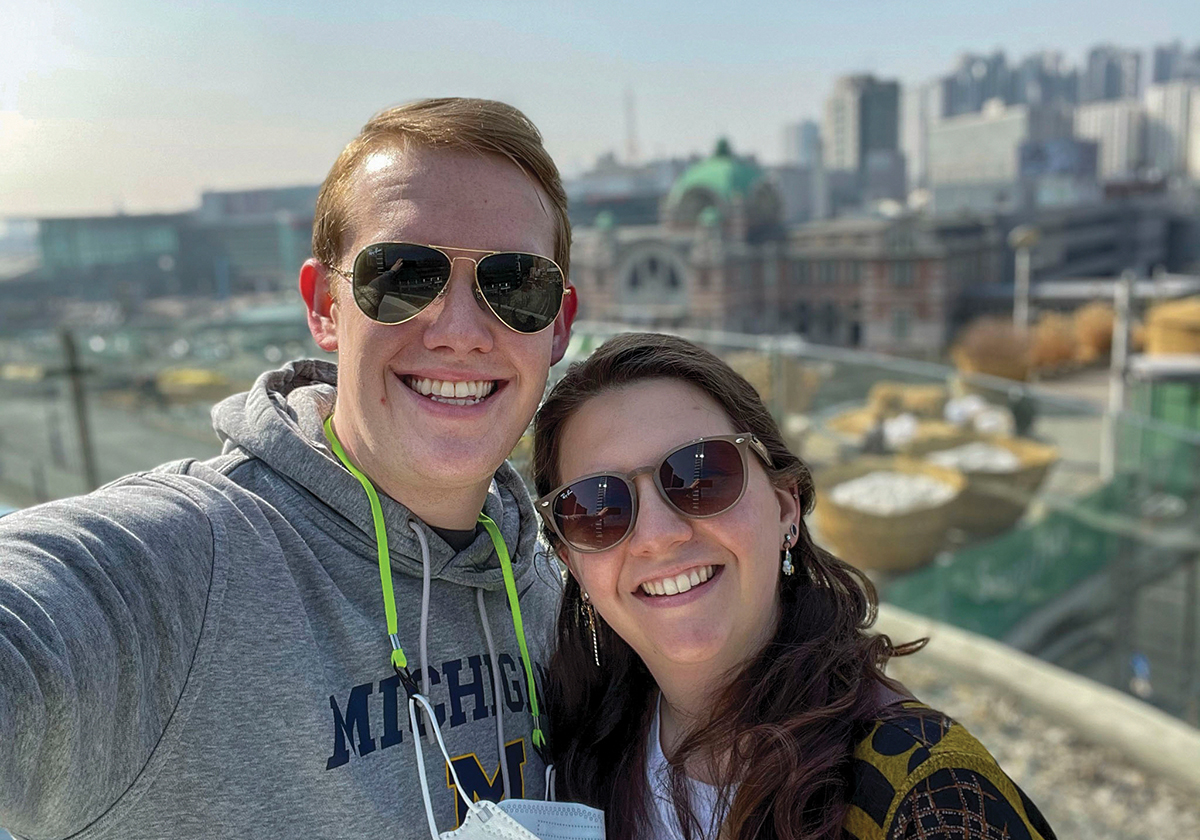
Clay sightseeing with his girlfriend, Maddie Kramer, in South Korea

